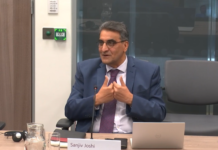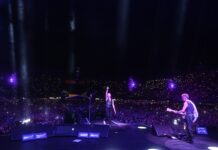In modern times technology has advanced in a way that is changing lives around the world. Unfortunately, this change also impacts one of the oldest institutions, religion, by changing the means and methods of reaching out to an audience over some time. In situations where there is probably no replacement for community worship and togetherness, technology is making it slightly easier for the world to study religion in detail and feel united to their faith.
How has the leap of technology affected the spread of religion?
The leap in technology that affected the spread of religion started with the printing press in the initial days. Before the invention of movable type, only written documents were able to be duplicated manually. The process being painstaking was undertaken by only a few. Most people remained illiterate as the words were not as increased as it is now. Literacy rates slowly started improving as soon as the written texts became easier to reproduce, and people could study their faith independently or in small groups. Individuals slowly started developing opinions and thoughts, new beliefs were born, and religion diversified and focused more on the personal.
The year 1920 saw the advent of the radio and the beginning of a decline in the rural population of America. Radio was an essential element for those civilians living in America’s rural, isolated regions as it helped them stay connected to the nation and with their faith. The first religious radio broadcast ever broadcasted took place on January 2, 1921, from Pittsburgh Calvary Episcopal Church. By the end of the 1920s, almost half of the American homes had a radio system installed. When the Great massive depression struck, the religious broadcast was considered to be a public good so that Americans searching for communion do not have to look hard. The message to be preached became increasingly broad, with more followers into the fold.
How technology plays a crucial role in making religion accessible for all?
Television became widespread once after World War II. This newly invented media platform allowed pastors, preachers, and religious leaders to reach a wider range of audiences in a more immersive way. As television became a primary in-house entertainment center between the 190s and 70s, it also opened up a field in the career of a televangelist, and some of the popular televangelists of those times were Billy Graham, Oral Roberts, Jim Swaggart, Jerry Falwell, and Pat Robertson. As televangelism continued to spread wider and attract more audiences, televangelists also started to get involved in the political arena and the religious arena.
As we realise that in the 20th century, modern-day technology is no different from the Guttenberg press. All that matters are the opportunity provided by the Internet, smartphones, and cloud communications. With the suitable technology in the organisation, one can gather faith, expand religious life to social platforms, make religious observances easier to follow. Further, it can also enrich adherents’ lives, disregarding where they are, not just during religious services, and lastly, it also simplifies growth and access to spiritual leaders.
With the advent of the Internet and apps like Quran app maker, simulcast worship services, podcasts, Christian message boards, and mailing lists provide ways for church-goers to stay in touch with their congregation, regardless of their particular location. The Internet has value for religious leaders and communities, from online theological degrees to sermon builders. It also provides new resources for pastors and religious leaders. Various popular apps provide the member with easy mobile access to the Torah, Koran, Bible, Gita, etc. Dropbox or Microsoft Office helps organisations share files and other important documents. Spiritual or religious gurus can make their sermons available through apps. Believers who have specific dietary guidelines or prayer times can find apps that will make it easier to carry out their observances.
Every invention comes with a package consisting of the good and the bad by-products of the research. It is always easier to view the detrimental impact of technology on religion that draws people into distraction and error. But that is only a one-sided picture. We do not realise that it also offers cutting-edge advantages, including new channels that enable religious organisations to reach wider audiences.
Help keep news FREE for our readers
Supporting your local community newspaper/online news outlet is crucial now more than ever. If you believe in independent journalism, then consider making a valuable contribution by making a one-time or monthly donation. We operate in rural areas where providing unbiased news can be challenging. Read More About Supporting The West Wales Chronicle

























